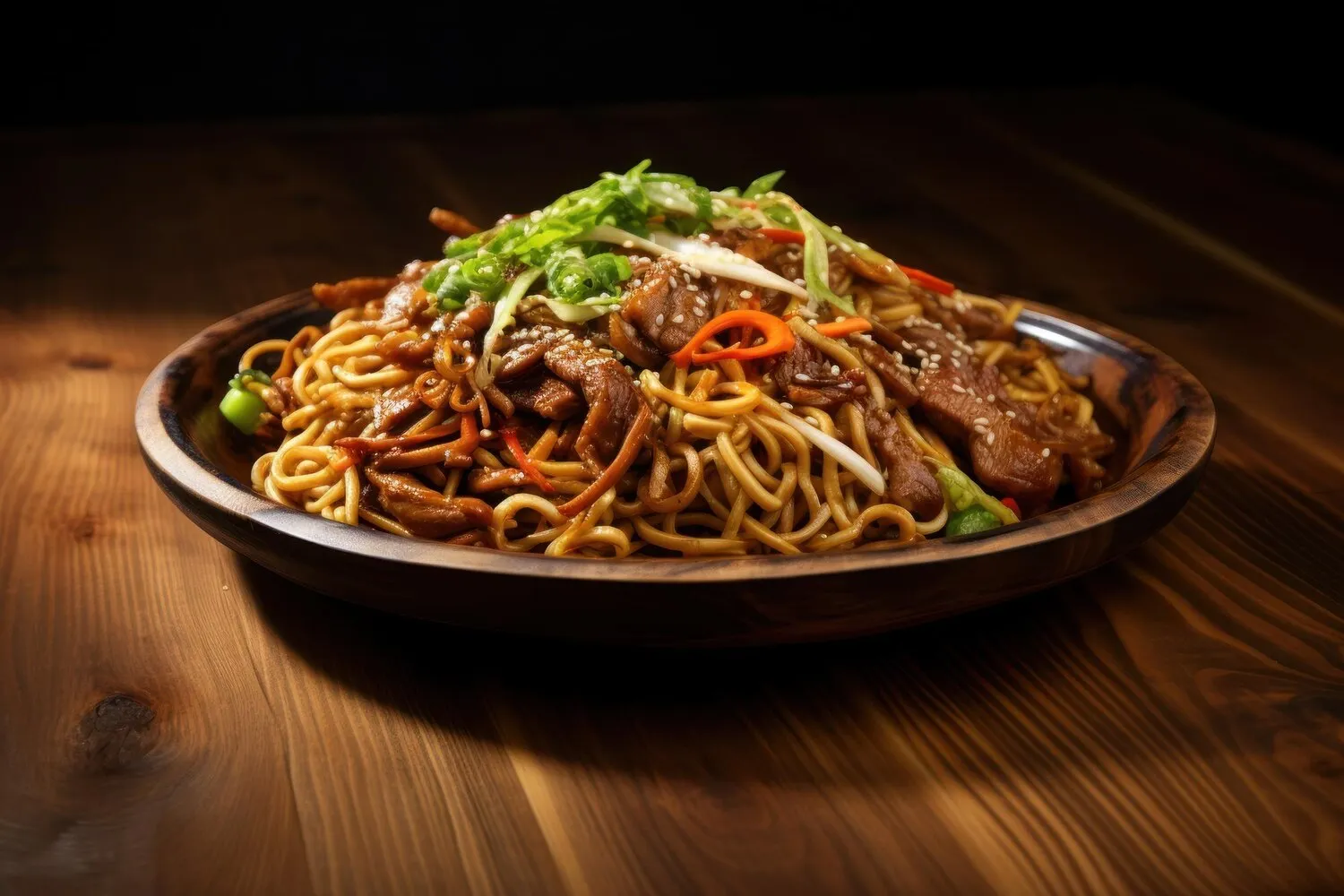
Buffet à volonté
All-you-can-eat buffet offering a variety of Asian dishes, including Chinese and Vietnamese cuisine. Features grilled meats, seafood, vegetables, and various sauces for wok cooking. Also includes sushi, spring rolls, and desserts.
Nutrition Facts
* The % Daily Value (DV) tells you how much a nutrient in a serving of food contributes to a daily diet. 2,000 calories a day is used for general nutrition advice.
The concept of a buffet has roots in medieval Sweden, but the 'all-you-can-eat' format gained popularity in the United States in the mid-20th century. Applying this model to Asian cuisine is a more recent phenomenon, reflecting the growing global popularity and accessibility of diverse Asian culinary traditions.
Asian buffets à volonté, while not directly tied to traditional dining customs, reflect the modern demand for variety and value. They allow diners to explore different cuisines and dishes within a single meal, often catering to group dining and diverse preferences.
Communal Eating
While buffet-style is not traditional, many Asian cultures emphasize communal eating and sharing dishes. A buffet allows for a similar experience of sampling and sharing diverse tastes with family and friends.
Adaptation and Globalization
The Asian buffet à volonté represents the adaptation of Asian cuisines to Western dining styles and the broader trend of culinary globalization. It makes Asian food more accessible and appealing to a wider audience.
The flavors are diverse and range from savory and spicy to sweet and umami, reflecting the variety of dishes available. Typical flavors include soy sauce, ginger, garlic, chili, lemongrass, fish sauce, and sesame oil.
Chinese dishes often feature combinations of sweet, sour, and savory elements, utilizing ingredients like soy sauce, rice wine vinegar, and star anise. Vietnamese cuisine emphasizes fresh herbs like cilantro, mint, and basil, along with fish sauce and lime. Grilled meats and seafood offer smoky and charred notes. Sushi brings a delicate balance of vinegared rice, raw fish, and seaweed. Sauces for wok cooking allow diners to customize flavors with varying levels of spice and sweetness.
Start Small
Take small portions of several dishes to sample and identify your favorites before committing to larger servings.
Pace Yourself
Don't overload your plate. Take your time and savor each dish to avoid feeling overwhelmed and bloated.
Explore Different Sections
Don't just stick to familiar dishes. Try something new from each section of the buffet, including sushi, grilled meats, wok options, and desserts.
Consider Drink Pairings
Green tea or light beers often complement the diverse flavors of Asian cuisine. Avoid sugary drinks that can dull your palate.
Utilize the Wok Station
If available, take advantage of the wok station to create your own customized dish with fresh ingredients and your choice of sauces.
Explore additional Asian dishes and restaurants
Explore AsianDiscover top dining spots and culinary experiences in Le Havre.
Explore Le HavreLearn more about the food culture, restaurant scene, and culinary heritage of France.
Explore France